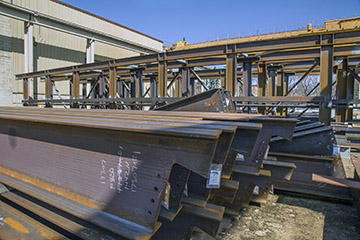How to Choose Filler Metals for Structural Steel Fabrication
Selecting the right filler metal for structural steel projects is important for meeting quality and code requirements, as well as passing inspections and staying on project deadlines. There are some key questions to ask to make the best choice.
-Will the welding take place in the field or shop?
-If welding outdoors, is portability or welding productivity the most important?
-If welding indoors, is it more important to have a flexible or a clean filler metal
-Which welding certifications do the welding operators have?
-What equipment is available?
After answering these questions, here are some considerations for field and shop welding.
Filler metals for the field
Stick welding is very common for outdoor structural steel applications, in part due to its familiarity among operators, but also because of its portability — it doesn’t require a separate shielding gas cylinder. However, it is also rather inefficient because the stick electrode requires frequent changeover.
A self-shielded flux-cored wire (FCAW-S) is a more productive option. This is especially true for:
-Field applications with a large amount of welding in a single site
-Applications with several large and/or multi-pass welds
-Contracts under tight deadlines
In some cases, it may be effective to qualify and use both stick electrodes and FCAW-S wire for the same job if both productivity and portability are desired. Operators will need to be certified in both processes.
Other considerations when choosing filler metals for the field:
-Hydrogen levels: The commonly used American Welding Society (AWS) 7018 stick electrodes have lower diffusible hydrogen levels (4ml per 100g or H4) than FCAW-S wires (8ml per 100g or higher). Determine the acceptable level of hydrogen based on the weld specs and codes.
-Power sources: FCAW-S wires should be used with a constant voltage (CV) power source. Depending on the classification of the wire, it may require DCEN or DCEP polarity. This varies from stick electrodes, which require a constant current (CC) power source.
-Welder training: FCAW-S wires have distinct operating requirements that need to be mastered, including specific gun angles and travel speeds, voltage settings and stick-out.
Filler metals for the shop
For welding of beams or other structural steel components in the shop, gas-shielded flux-cored (FCAW-G) wiresare a common choice for a number of reasons. They provide:
-All-position welding capabilities
-Ease-of-use
-Simplified training
-Large welding parameter windows
-Forgiveness to inconsistent techniques
-The ability to weld through dirty base metal
-High deposition rates
However, FCAW-G wires do produce slag, which must be removed in between passes and after welding. This can slow productivity.
For in-position welds, an alternative would be to use a metal-cored wire as this wire is cleaner. It also offers additional advantages, such as:
-A broader, fluid weld pool that is easy to control
-Higher levels of deoxidizers to weld through mill scale
-Low spatter levels
-Good gap bridging
Submerged arc welding (SAW) with solid or metal-cored wires is another option for structural steel fabrication in the shop, particularly for I-beam applications requiring long, continuous and possibly multi-pass welds.
SAW requires a larger capital expense than equipment for handheld processes, but it offers the highest productivity rates, which can oftentimes pay off quickly.
To gain the best results in the field or the shop, fabricators should ask themselves: Am I using the right filler metal? The Hobart applications department can help in making the decision. Contact them at 800-532-2618.



